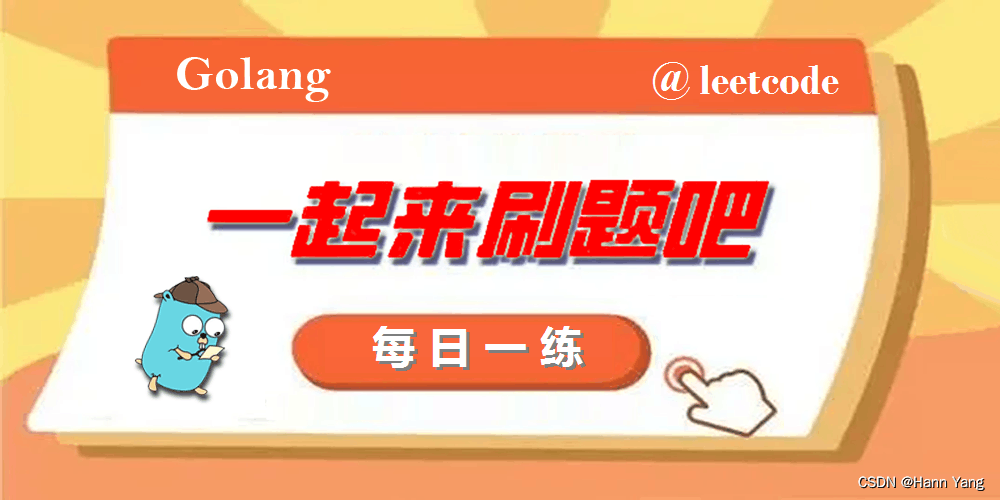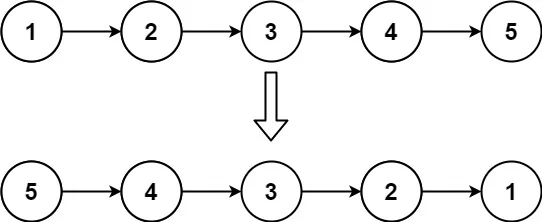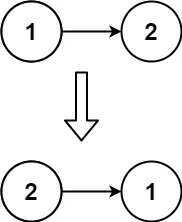
目录
205. 同构字符串 Isomorphic Strings 🌟
206. 反转链表 Reverse Linked-list 🌟
🌟 每日一练刷题专栏 🌟
Rust每日一练 专栏
Golang每日一练 专栏
Python每日一练 专栏
C/C++每日一练 专栏
Java每日一练 专栏
205. 同构字符串 Isomorphic Strings
stst每个出现的字符都应当映射到另一个字符,同时不改变字符的顺序。不同字符不能映射到同一个字符上,相同字符只能映射到同一个字符上,字符可以映射到自己本身。
示例 1:
输入:s = "egg", t = "add" 输出:true
示例 2:
输入:s = "foo", t = "bar" 输出:false
示例 3:
输入:s = "paper", t = "title" 输出:true
提示:
1 <= s.length <= 5 * 10^4t.length == s.lengthst代码:三种方法,分别用哈希表、数组、字符串函数实现
package main
import (
"fmt"
"strings"
)
func isIsomorphic(s string, t string) bool {
if len(s) != len(t) {
return false
}
sMap := make(map[byte]byte) // 字符映射表,用于保存每个字符的映射
tMap := make(map[byte]bool) // 标记表,用于记录每个字符是否已经有映射
for i := 0; i < len(s); i++ {
if val, ok := sMap[s[i]]; ok { // 如果s[i]已经有映射,则检查其是否符合要求
if val != t[i] {
return false
}
} else { // 如果s[i]没有映射,则添加映射
if tMap[t[i]] { // 如果t[i]已经有了映射,则说明不符合要求
return false
}
sMap[s[i]] = t[i]
tMap[t[i]] = true
}
}
return true
}
func isIsomorphic2(s string, t string) bool {
if len(s) != len(t) {
return false
}
s2t := make([]byte, 256) // 用数组保存映射关系
t2s := make([]byte, 256) // 用数组保存映射关系
for i := 0; i < len(s); i++ {
if s2t[s[i]] != 0 && s2t[s[i]] != t[i] || t2s[t[i]] != 0 && t2s[t[i]] != s[i] {
return false
}
s2t[s[i]] = t[i]
t2s[t[i]] = s[i]
}
return true
}
func isIsomorphic3(s string, t string) bool {
for i := 0; i < len(s); i++ {
if strings.IndexByte(s, s[i]) != strings.IndexByte(t, t[i]) {
return false
}
}
return true
}
func main() {
s := "egg"
t := "add"
fmt.Println(isIsomorphic(s, t))
fmt.Println(isIsomorphic2(s, t))
fmt.Println(isIsomorphic3(s, t))
s = "foo"
t = "bar"
fmt.Println(isIsomorphic(s, t))
fmt.Println(isIsomorphic2(s, t))
fmt.Println(isIsomorphic3(s, t))
s = "paper"
t = "title"
fmt.Println(isIsomorphic(s, t))
fmt.Println(isIsomorphic2(s, t))
fmt.Println(isIsomorphic3(s, t))
}
输出:
true
true
true
false
false
false
true
true
true
206. 反转链表 Reverse Linked-list
head示例 1:

输入:head = [1,2,3,4,5] 输出:[5,4,3,2,1]
示例 2:

输入:head = [1,2] 输出:[2,1]
示例 3:
输入:head = [] 输出:[]
提示:
[0, 5000]-5000 <= Node.val <= 5000进阶:链表可以选用迭代或递归方式完成反转。你能否用两种方法解决这道题?
代码:
package main
import "fmt"
// 链表节点的定义
type ListNode struct {
Val int
Next *ListNode
}
// 遍历链表
func (head *ListNode) print() {
for head != nil {
fmt.Printf("%d->", head.Val)
head = head.Next
}
fmt.Println("<nil>")
}
// 创建链表
func create(arr []int) *ListNode {
if len(arr) == 0 {
return nil
}
head := &ListNode{Val: arr[0]}
cur := head
for i := 1; i < len(arr); i++ {
node := &ListNode{Val: arr[i]}
cur.Next = node
cur = cur.Next
}
return head
}
func reverseList(head *ListNode) *ListNode {
var prev, next *ListNode
for head != nil {
next = head.Next
head.Next = prev
prev = head
head = next
}
return prev
}
func main() {
arr1 := []int{1, 2, 3, 4, 5}
head1 := create(arr1)
head1.print()
head11 := reverseList(head1)
head11.print()
arr2 := []int{1, 2}
head2 := create(arr2)
head2.print()
head2 = reverseList(head2)
head2.print()
}
输出:
1->2->3->4->5-><nil>
5->4->3->2->1-><nil>
1->2-><nil>
2->1-><nil>
✨ 持续,努力奋斗做强刷题搬运工!
👍 点赞,你的认可是我坚持的动力!
🌟 收藏,你的青睐是我努力的方向!
✎ 评论,你的意见是我进步的财富!
☸ 主页:https://hannyang.blog.csdn.net/
|
| Rust每日一练 专栏(2023.5.16~)更新中... |
|
| |
|
| |
|
| |
|
|





